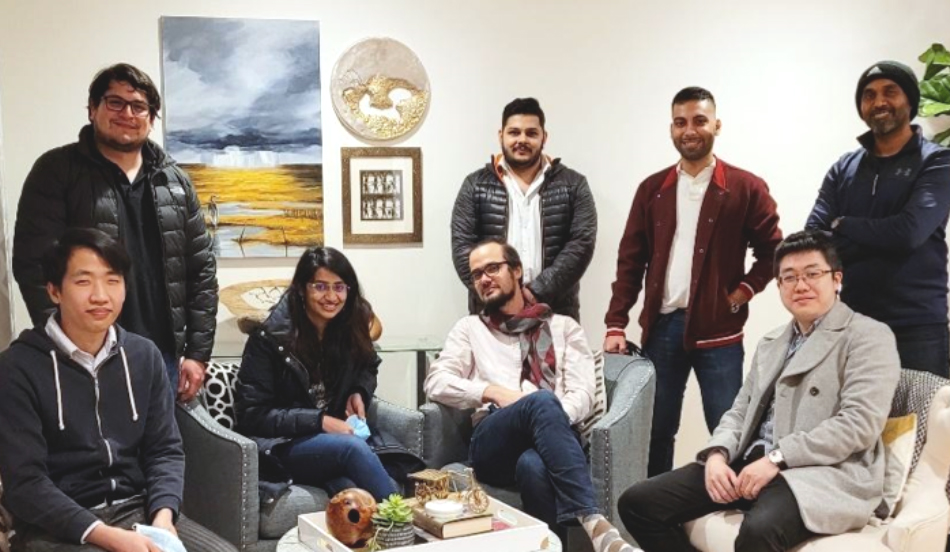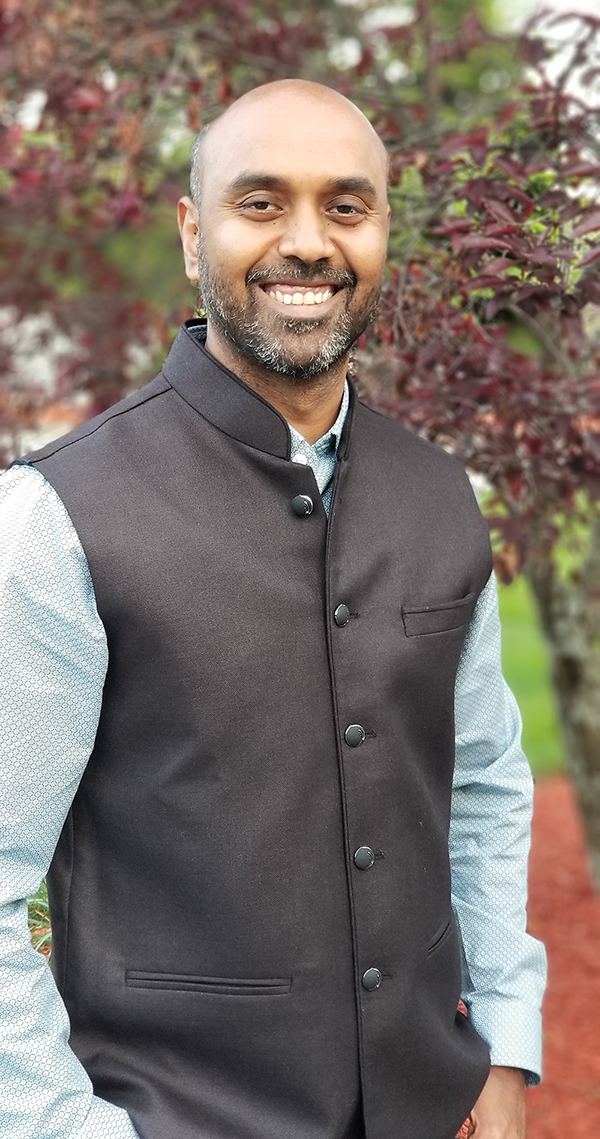Professor Dongare Discusses Developments as part of ‘CREDDS’ and the UTC Professorship
By Gabriela Esposito, Student Written Communications Assistant
Professor Avinash Dongare joined the Department of Materials Science and Engineering (MSE) at the University of Connecticut in 2012, almost a decade ago. Over these years, he has transitioned from an Assistant to an Associate Professor, been appointed to prestigious positions, expanded his research group, and collaborated with various institutions and organizations. Dongare has witnessed many changes in this past decade as part of the growth of the MSE Department. “MSE was a program in a joint department when I joined in 2012. Within a few months, the MSE department formed and has been accelerating ever since. Unfortunately, so did my receding hairline,” reflects Avinash.
Notably, the department has grown in the number of faculty, adding to the research diversity in materials at UConn. Dongare mentions that the MSE Department is “a young and dynamic department that provides creative and novel research platforms to many researchers, students and collaborators across the country. This growth reflects the excellent leadership and guidance of Professor Pamir Alpay, previous Department Head; Professor Bryan Huey, the current Department Head; Professor Steven Suib, the Director of the Institute of Materials Science; and Dean Kazem Kazerounian of the School of Engineering. Of course, the contributions of the staff and the students of the department form the foundations of the success.”
Over the years, Dongare’s innovative research has received recognition nationwide. He has expanded his research portfolio, increased the number of members of this research team, and taken new leadership roles. After receiving his tenure and being promoted to Associate Professor in 2018, Dongare’s recent success story includes the Center for Research Excellence on Dynamically Deformed Solids (CREDDS) funded by the U.S. Department of Energy’s National Nuclear Security Administration (DOE/NNSA). CREDDS is one of four new Centers of Excellence at universities across the nation and received 12.5 million dollars over five years. Dongare serves as one of the four principal investigators as UConn partners with Texas A & M University (lead), University of California, Santa Barbara, and the University of Michigan, Ann Arbor.
“Our focus at UConn is to understand the role of interfaces in structural multiphase metallic materials when subjected to extremes of shock and high strain rate deformation,” Dongare says. This development aims to revolutionize such materials, fabricated using advanced manufacturing methods. “Computational methods which can explore the phase space of materials and their responses in extreme environments allow us to run numerous virtual experiments at a fraction of the cost, letting us especially focus on new materials development and design,” Dongare adds.

The Computational Materials and Mechanics Group (CMMG). Back: Marco Echeverria, Avanish Mishra, Sumit Suresh, and Professor Avinash Dongare. Front: Ching Chen, Shayani Parida, Sergey Galitskiy, and Ke Ma
CREDDS research has led to several new developments in Dongare’s research group, the “Computational Materials and Mechanics Group” (CMMG). Postdoctoral researcher Avanish Mishra and graduate student Marco Echeverria are the researchers from his team involved in CREDDS. They run virtual experiments of shock deformation of metallic materials and use simulated diffraction patterns and misorientation maps to characterize defect structures equivalent to experimental measurements. Such atomic-scale simulations, and the virtually generated diffractograms and maps, complement the interpretation of experimental in situ characterization of deformation modes (slip, twinning, phase transformation) under shock loading conditions performed by CREDDS collaborators and scientists at several Department of Energy national labs. “This ability to compare the results of our simulations with experiments, for the same microstructures and under identical extreme conditions, is critical for the validation of the computational methods that exist today to guide the experiments of tomorrow,” Dongare mentions.
Also in 2018, the School of Engineering named Dongare as the United Technologies Corporation (UTC) Professor in Engineering Innovation. The professorship was established in 2000 to recognize exceptional achievements among young faculty exemplifying excellence in the impact of their research, teaching, and service contributions. This professorship provides a three-year funding award for professional development and growth. “The UTC professorship has enabled me to add certain flavors of research to my group over the past couple of years,” Dongare says. The funding award sponsored a Senior Design Project that used machine learning methods to identify layered materials for battery applications. The students ultimately won the 1st prize in the 2018-2019 Senior Design Competition. Continuing this research direction, graduate student Shayani Parida is currently working on a machine learning model to discover and design new layered materials for battery technologies.
Dongare’s research group especially focuses on developing modeling capabilities that can be compared with those of experimental collaborators at UConn and nationwide. This often requires modeling the behavior of materials at the mesoscale, such as the quasi-coarse-grained dynamics (QCGD) developed by Dongare. Graduate students Garvit Agarwal, Sergey Galitskiy, Ke Ma, Sumit Suresh, and Ching Chen used the QCGD simulation method to understand material responses during shock deformation, laser-material interactions, and cold-spray deposition, all at the length and time scales of real-world experiments. Dongare emphasizes the need for collaborations with researchers nationwide and especially at the national labs as a career development opportunity for the students. Dongare says, “We have active collaborations with several research groups in academia and at the US national labs. These collaborations have evolved over time and provide students excellent opportunities to publish with scientists and engineers from across the country. I try to make sure every member of my group gets such an experience, ideally as a summer intern or a visiting researcher at the labs. This helps give them exposure to opportunities for the future.”
As to the pandemic crisis, Dongare mentions that it brought some unanticipated challenges but also opportunities. For example, throughout his career Dongare embraced traditional classroom teaching—he enjoys deriving thermodynamic equations on the board, and more recently with an iPad. Department head Bryan Huey notes that he regularly hears compliments about Avinash’ classes from undergraduate and graduate students, whether it be core classes like thermodynamics or more focused electives on modelling or mechanical properties.
Over this past year, Dongare ‘flipped’ his classes as part of the necessary transition to virtual teaching starting last March. Students watch recorded lectures in advance of class sessions, so that the time ‘together’ can be spent actively discussing course topics and problems instead. This helps to leverage the online format and encourage student discussion and participation. Interactions with his group have also had to shift. “While we interact virtually all the time, the inability to be in the lab together or visit collaborators is difficult. Especially as a mostly-modelling group, though, we’re more used to it and it’s not really slowing down my hard-working students,” Dongare shares.
Looking ahead, the future is bright to Associate Professor Dongare. The MSE Department and the Institute of Materials Science have become a home. The growth in research capabilities and the research over the past decade have been especially exciting. Dongare reflects, “In my heart, I feel like I joined UConn just yesterday. However, when I see myself in the mirror and see the completely receded hairline, I realize a lot has changed. And while there is always a challenge related to establishing new directions, the interactions with my colleagues in MSE and IMS encourage me and help me every day. There is also an unparalleled sense of satisfaction in seeing my students graduating with a Ph.D. and being successful in their own careers.”
Published: May 7, 2021
Categories: computation, faculty, graduate students, news, research
Available Archives
